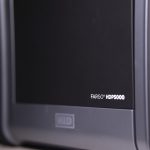Direct to Film (DTF) transfers are a popular method for applying vibrant, long-lasting designs to various types of fabrics. However, mistakes happen—maybe the transfer didn’t align properly, or you simply changed your mind about the design. Whatever the reason, removing a DTF print from a shirt can be a bit tricky. Fortunately, with the right tools and techniques, it’s possible to clear that print and restore your shirt as best as possible.
Understanding DTF Transfers
DTF transfers involve printing a design onto a special film and then transferring that image onto fabric using heat and adhesive powder. Once applied, the design fuses with the fabric and becomes quite durable, making removal a challenge. DTF doesn’t sit just on top of the fabric; it partially embeds into the fibers, especially on cotton and polyester garments.
Before diving into the methods, it’s important to manage expectations. DTF transfers are designed to be permanent, so complete removal may not always be feasible without damaging the fabric.
Methods to Remove DTF from a Shirt
Here are some of the most effective approaches to break down and remove DTF prints from fabric:
1. Heat and Peel Method
- Use a heat press or a clothing iron to reheat the area with the DTF print. Set the temperature to around 300°F (150°C).
- Apply heat for 10-15 seconds. The goal is to soften the adhesive backing.
- Using a sharp tool like tweezers or a craft blade, gently lift the edge of the print and start peeling.
- If it resists, stop immediately to avoid tearing the fabric and reapply heat.
This method works best when the DTF transfer hasn’t been fully cured yet or is only a few days old.
[ai-img]heat press, shirt, dtf removal[/ai-img]
2. Applying Solvents
Some professionals use chemical solvents to dissolve adhesives without harming the garment, although this method requires caution.
- Purchase a vinyl remover or adhesive remover—look for ones safe for fabric use.
- Test the solvent on a small, inconspicuous patch of the shirt first.
- Apply the solvent to the DTF print using a cotton swab or sponge.
- Let it sit for a few minutes, then use a blunt scraper to gently lift the softened image.
Important: Always wear gloves and work in a well-ventilated area when handling solvents.
3. Using Rubbing Alcohol or Acetone
If you prefer a more accessible product, household rubbing alcohol or nail polish remover (which contains acetone) can sometimes soften DTF adhesives.
- Soak a cotton ball in alcohol or acetone.
- Blot the DTF design gently and allow the liquid to penetrate the transfer.
- After a few minutes, try peeling the design with tweezers or gently scraping with a plastic scraper.
Note: This method can discolor or damage sensitive fabrics, so testing is mandatory.
Post-Removal Fabric Care
Once you’ve removed most of the DTF transfer, the affected area may look a bit rough or sticky. To get your shirt as close to its original state, follow these steps:
- Wash the shirt immediately after removal to get rid of solvent residue.
- Add a bit of baking soda or vinegar to the wash as a natural cleanser and odor neutralizer.
- Air dry only—avoid heat drying which could set any leftover adhesive permanently.
[ai-img]shirt before after, cleaned fabric, dtf removal process[/ai-img]
When to Replace Instead
Sometimes despite your best efforts, the design remains stubborn or the material gets damaged in the process. If you’re working with a delicate fabric or a beloved shirt, you might want to pause and reconsider if removal is worth the potential outcome. In some cases, covering up the old design with a new transfer or a patch might be an easier and more aesthetically pleasing solution.
Final Thoughts
Removing DTF from a shirt is challenging, but not impossible. The key is to use the right products, stay patient during the process, and pay close attention to the type of fabric you’re working with. Whether you’re correcting a small mistake or repurposing a shirt entirely, these methods offer a shot at salvaging your garment without too much compromise.
Always remember to work in a safe environment and wear protective gear when using chemical solvents or high heat tools. Happy crafting!








